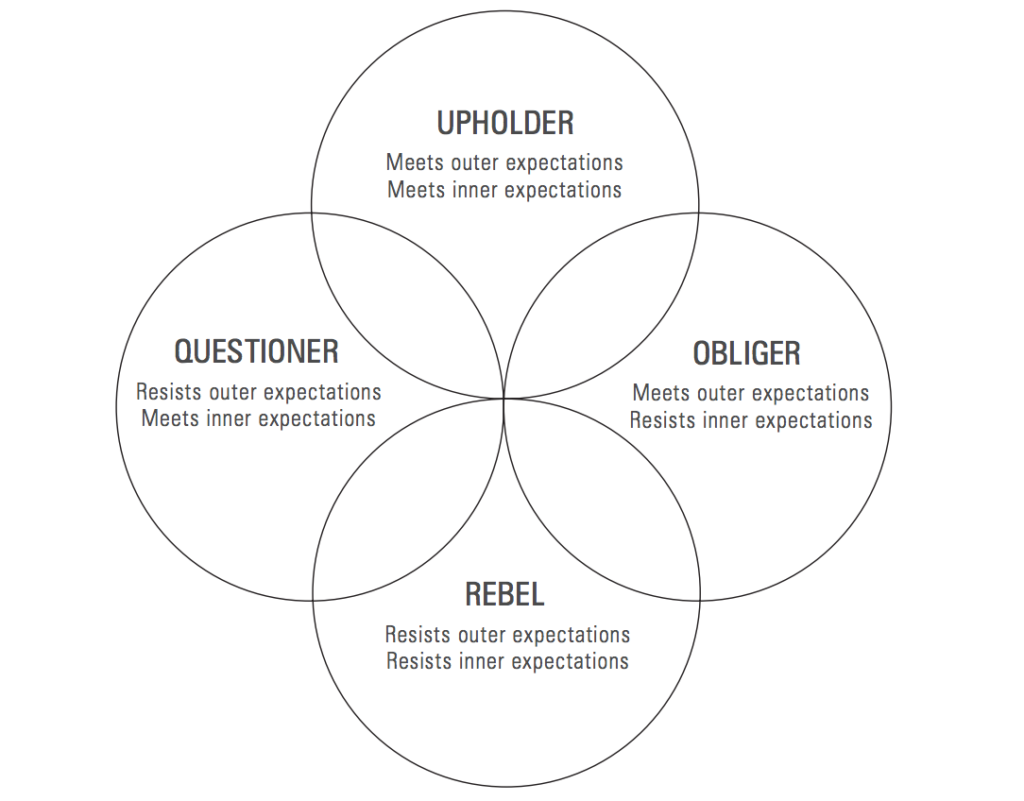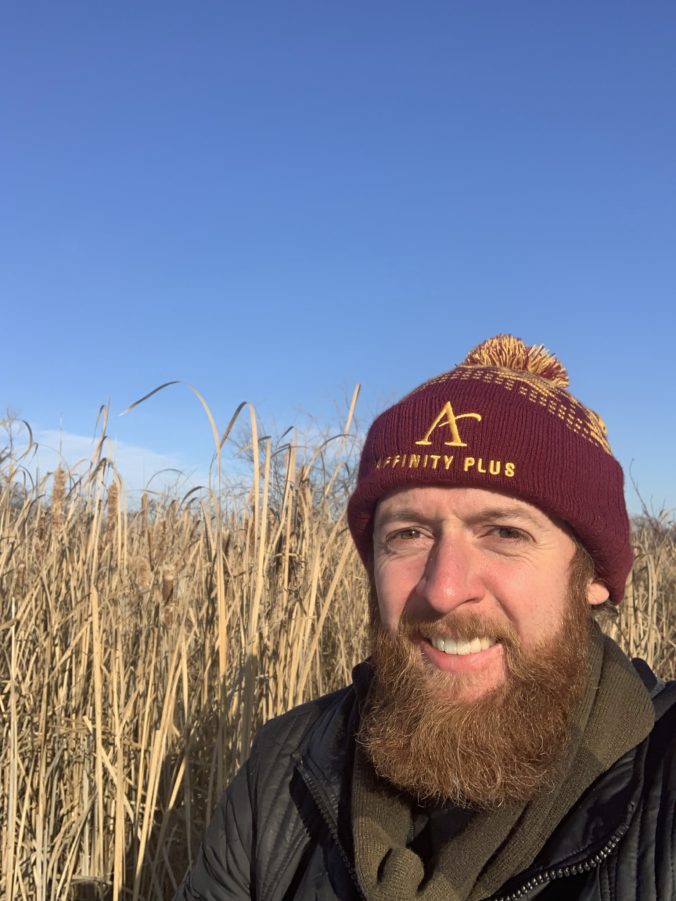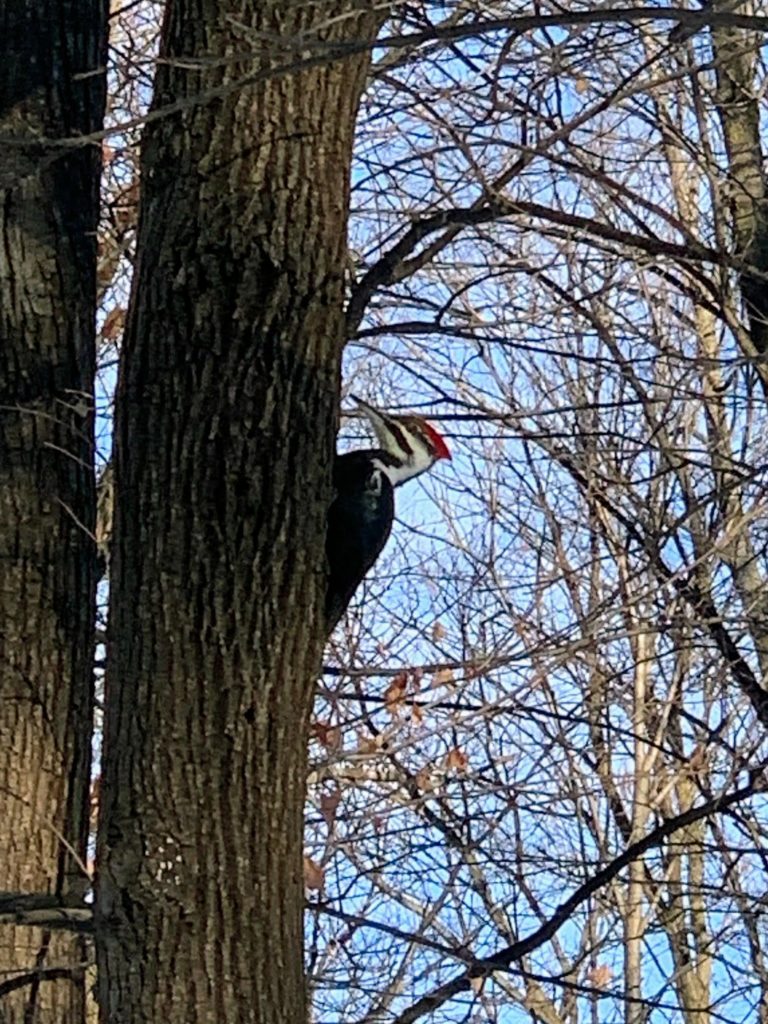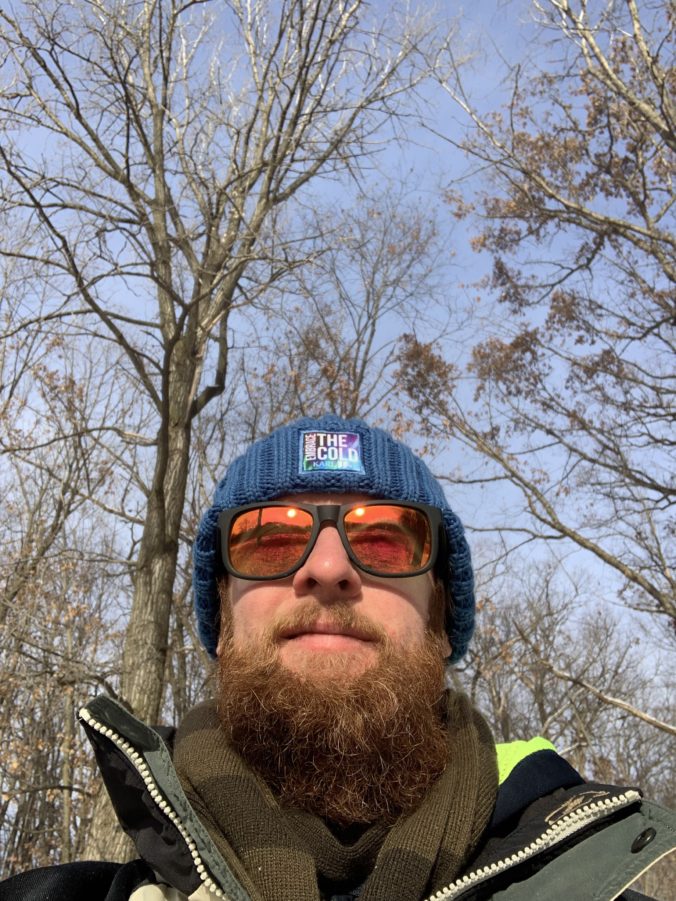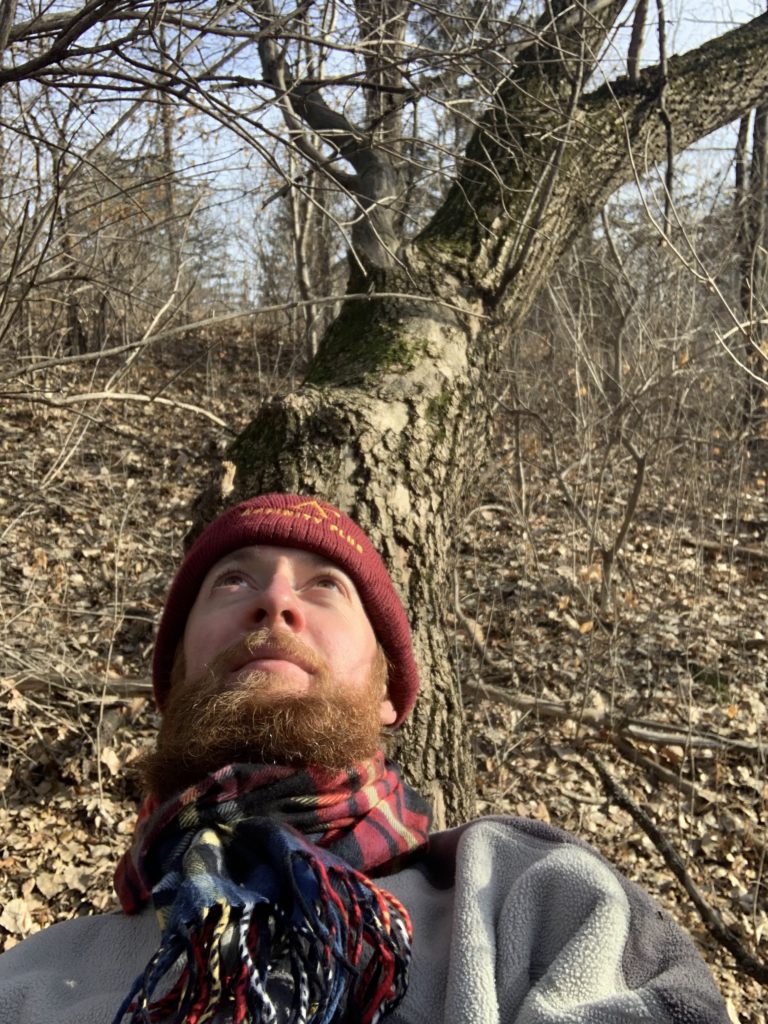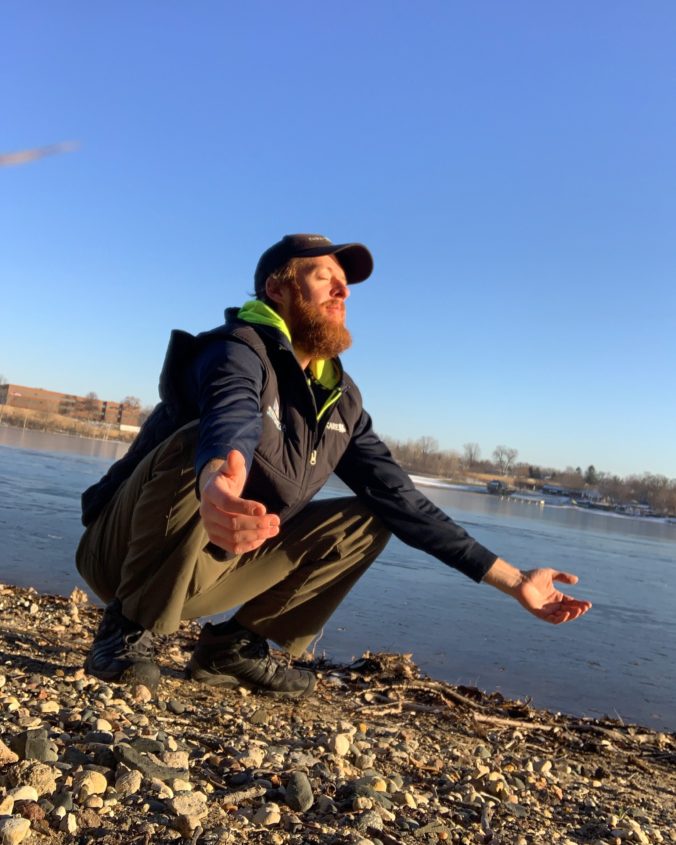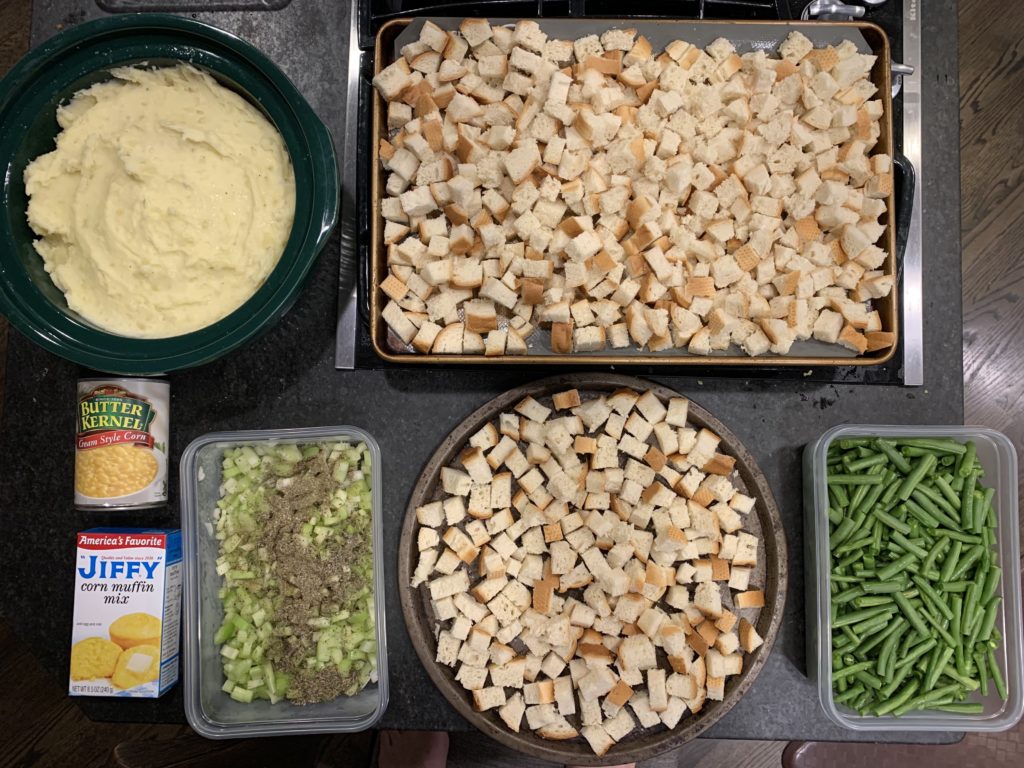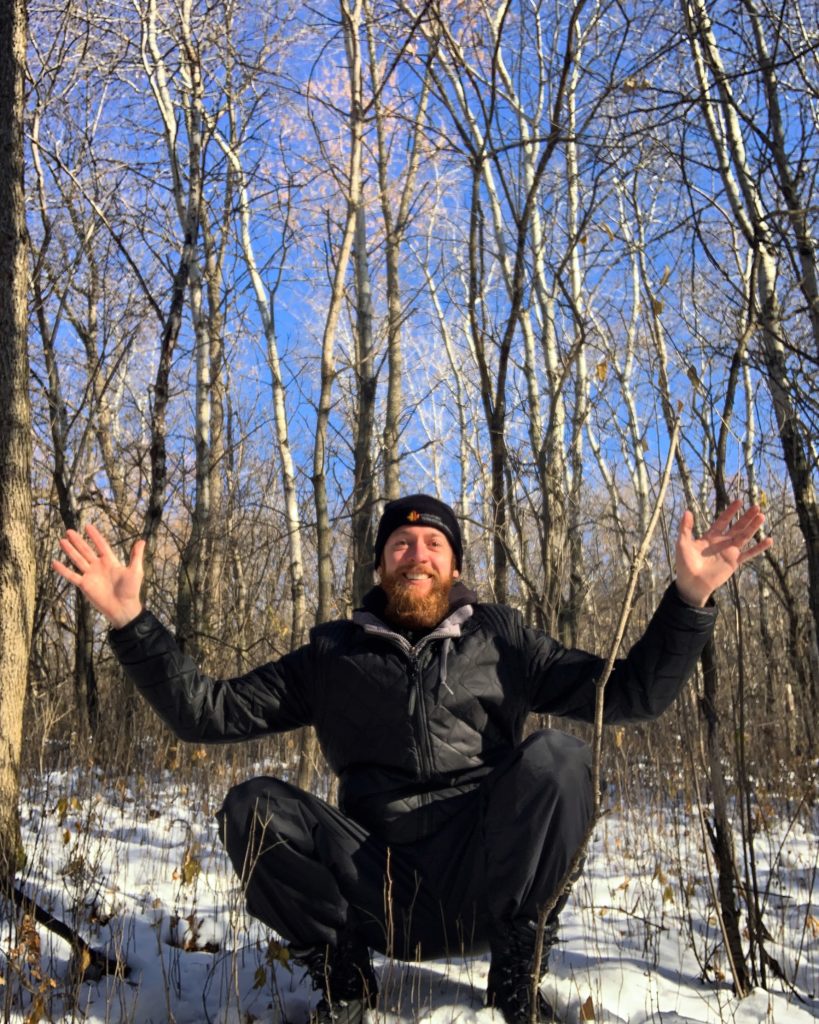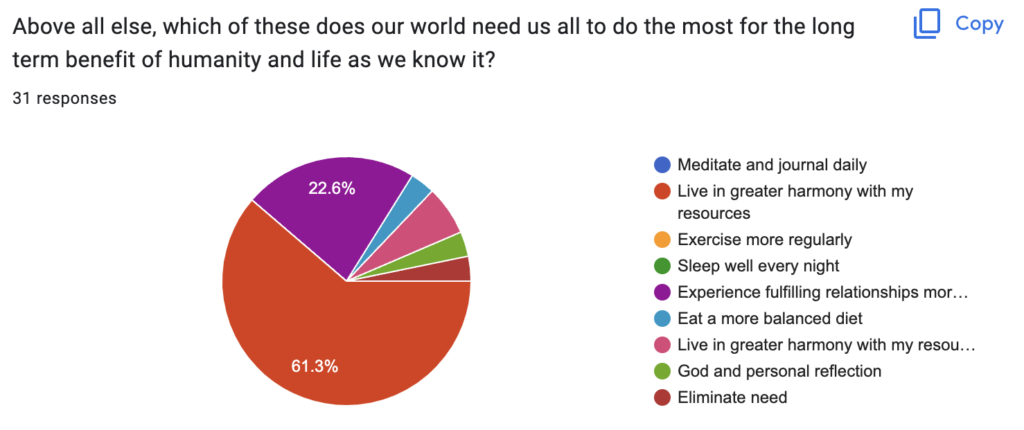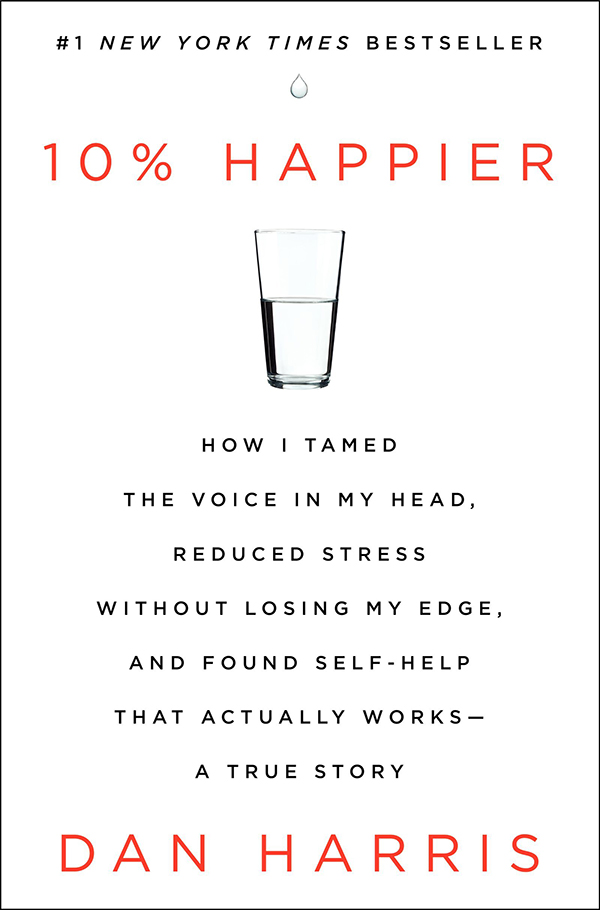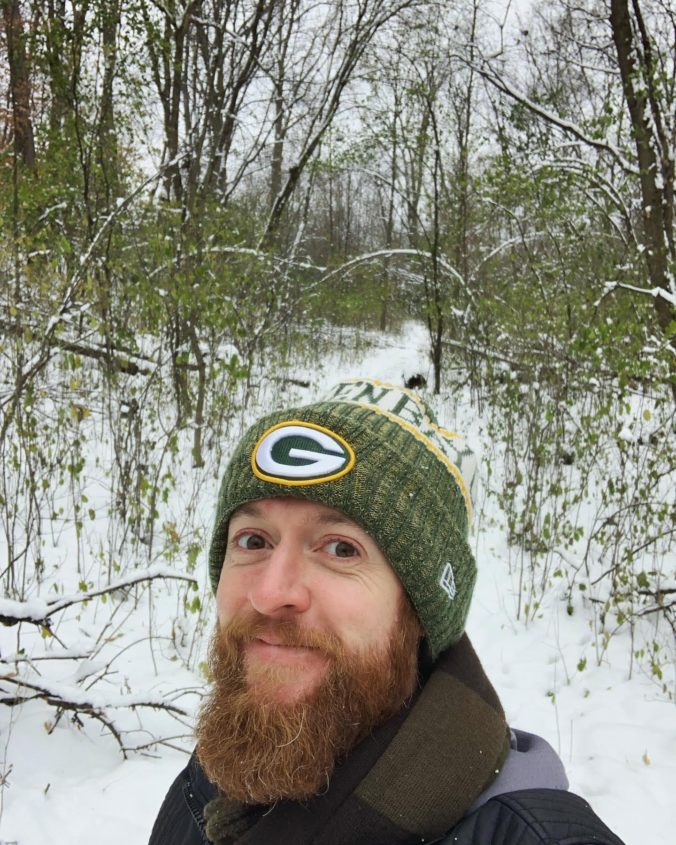This week marks a half year. It has been a half of a year since I quit my job, left the workforce, entered a state of sabbatical, and started a new chapter in my life. Now that I’m six months in, it feels like more than a new chapter; it feels like a new book. Huge swaths of my days are filled with practices and activities I was not doing at all a year ago. My relationship with my partner is at an all-time high; our communication has leveled up, several levels. As I write these words, I’m listening to a 5-layered house music track that I recorded just earlier this morning. Neither writing nor music-making were in my list of weekly to do’s a year ago, save writing emails to clients or crunching out the occasional scrap of advertising copy.
When I initially started sabbatical, I told myself it was going to be roughly a two year period: one year in Minnesota, and one year in Costa Rica. That was and has been the tentative plan. I told myself, “once we move, once we complete this transition and get settled in to our neighborhood, a new school, a new community, a new way of life… that’s when I can start actually letting myself think practically, letting myself worry about the future.”
I am just now, in this moment, checking in with myself to reflect on the time so far. It’s not a question of what I’ve done, what activities I’ve done, what items I’ve checked off my bucket list. The question is – Where am I now? How do I feel now? What brand of Kevin am I now? How do I feel about the fact that I’m 25% of the way through this ‘plan’? And what path am I headed on? What is my trajectory? And what is my relationship to my current state and to my trajectory?
I feel… comfortable with it. This time has had its challenges, mostly of the existential variety, but for the most part the common thread throughout the last six months has been joy. It has been a gift to untether from my old self, from my previous conditioning, from my past decisions that I have now grown away from. It has been a joy to spend more time with my kids and to act more childlike myself. Digging in to who I really am and who I want to be has its uncomfortable moments, but on the whole it has been a treat to afford the time to fully detach and to put maximum effort into starting anew.
I like the person I am now compared to Old Kevin. I have asked myself what I value, and I’ve sat with that question until I’ve come up with some answers. I have more clarity about what I value, what I want my life to be about, what I want my time to be spent doing. It’s family, it’s outdoors, it’s the environment, and it’s being generous and giving to others, others now and others in the future. I love that I’ve been able to prioritize myself and doing what I want to do, being how I want to be. If I want to go outside, I go. If I want to listen to music, I listen. If I want to make music, I make. If I want to do nothing, I sit. If I want to let a blog post take four hours to make because I’m trying to perfect it or get it “just so,” then so be it! That’s what I wanted to do. I let myself do it. I’m not letting any external influences or thoughts or preconceived notions or conditionings get in my way.
I know that I’m a better communicator. I’m more mindful of how I am, of what I say and how I say it. I’m more in tune with others. Friends have told me, observed this about Kristyn and I, that we have an ability to be tuned in to how others are feeling.
I know that this is making me a better father, not always having some place to go or some place to be or some project to work on, when my kids just want to play with me in that special time between end of school and bed.
Life is not meant to be rushed through. I’ve really enjoyed slowing down and trying to actually live each day, not just move through each day.
And yeah, there are days that are hard, days where I feel lost, days where I’ve told Kristyn, “I’m lost. I don’t know what I’m doing. I don’t like this feeling. I feel like I don’t know what I’m supposed to do today. But I want to know what I’m supposed to do.” There are a lot of “could’s”: I could write, I could exercise, I could cook, I could brainstorm a teen fiction series, I could make a new beat, I could go for a walk, I could meditate. Which one should I start with? Should. Should based on… what, exactly? Should does not exist. Should is a facade. There is no should. So yeah, I have days like this, days where I feel aimless, but that’s a small price to pay for the tradeoff of the joys of slowness and simplicity. In fact, the discomfort of that aimlessness is what I want to be experiencing, because that is where growth comes from. No pain, no gain.
I’m still working on this, but as I reflect on the last six months, one of the underlying themes has been my effort to let go of yearning, of wishing, of wanting things I don’t have, experiences I haven’t had. I’ve been really trying to mindfully think into what is within my power to make today feel like a “dream day,” a day where I lived as close to being in choice that I could be. What can I do today to make it feel like a “million dollar day”? And I have to say, I’ve been having a lot of days that feel that way. It’s hard to put a price on that.
I hold my privilege front and center in my mind as often as I can remember to do so. I hope that by unlearning many of the assumptions I had been operating under, by focusing on becoming the truest version of myself, and by generously radiating compassion toward those around me, I am putting my privilege to the best possible use for the betterment of my family and humanity.
So… what now? What are my goals for the next six months? Knowing what I know now about these last six months, what does that make me think about next semester? What do I want to do differently? How do I want to be different? What do I want to continue?
I know I want to continue many of my recent practices: morning meditations, exercise routine rotating strength, cardio, and yoga, writing on this blog, building up the Naturally Better idea, and plunking away at the keyboard to make fun little tunes for myself.
One big difference for the next quartile of sabbatical? The move to Costa Rica. In the past six months, I have done very little to prepare for this transition relative to how much I’m going to need to do in the half year ahead. In this situation I think using some labels will be helpful for me to give some structure to my time.
Labels that feel right for what the first quarter of sabbatical was like are: Unplug, Reset, Rebirth, Childhood, and Unlearn.
The labels I intend to uphold for the next half year are: Practice, Adolescence, Authenticity, Minimize, and Transition.
Practice: having the discipline and devotion to practices that align with my values, and not allowing disruption of these practices by things I value less than the practice.
Adolescence: when I was a teenager, I went through phases where I practiced stuff relentlessly. There was a semester in high school where I played saxophone five days a week. I would play volleyball every chance I got. I did these things not because someone was making me; I did them because I loved doing them. I want to embody that passionate spirit again, of not worrying about the practicality of an activity or hobby and letting myself get absorbed by something for the sheer joy of it and for the satisfying feeling of improvement.
Authenticity: as I learn about new concepts (such as meditation or barefoot running), can I actually walk the walk? If I learn that beef is the most harmful food for the environment, can I actually stop eating it? If I discover that spending more time barefoot can unlock huge health benefits, do I have the courage to actually kick my shoes off around the neighborhood?
Minimize: it’s time to get rid of my crap. I have no choice but to do so; the house we’ll move to in Costa Rica is much smaller than our current house. Less stuff. More space.
Transition: while the last half year was a time of detaching and jumping off a moving train, the time ahead will start to feel like movement toward a new direction, a transition in to something new.
That’s a wrap on reflecting about my sabbatical so far. Onward to reviewing the experiences of the past week!
A WORK MEETING? NOT EXACTLY.
I kicked off this week with something I haven’t done in half a year – a professional networking Zoom meeting. I should put “professional” in quotes; I had a conversation with one person I knew from my most recent job as a TV advertising sales rep. She had worked on the Marketing team at one of my best clients, had seen my post on LinkedIn where I shared my departure from the workforce and my intention for the time ahead, and had reached out to me to set up a time to chat.
When we hopped on the Zoom, I learned she had also since left her position and was pursuing self-employment as a freelance marketer. As she explained her situation, what she was working on, what she was feeling stuck with, I noticed myself going into a sort of “counselor mode.” I listened intently. I gently probed for her to expand on her hesitations. I did my best to help her see her own answers were already there. At one point she even joked, “I can’t believe we’re talking about this; this is starting to feel like a therapy session!” Even though our conversation carried on without missing a beat, when she said that, I strangely felt a rush of pride. The idea of someone talking to me feeling like therapy for them… I liked that idea. It was a tiny hint, an iota of a clue that, perhaps, I’m on the right track, that everything I’m doing, every choice I’m making, every book I’m reading, every uncomfortable conversation I’m having with Kristyn, every word I’m typing is what I’m supposed to be doing. Validation feels incredible.
After this conversation I also learned that I want to practice framing up “what I’ve been up to” more succinctly. Most of the time, when I tell people I’m on sabbatical, they ask, “So what do you do all day?” or “What have you been up to, then?”
I wasn’t adequately prepared for this question in the context of a more professional, career-oriented conversation, of being more mindful of my conduct, of my words, of how I carry myself. I wrote these notes down after the call as I brainstormed how to give a tighter elevator pitch to people of what my sabbatical has been about thus far:
- Doing less and being more.
- Reading lots. Writing some.
- Focusing on mindful living.
- Being present with my kids.
- Being present with my partner.
- Being present with myself.
- Cooking (almost) all my food.
- Moving my body when it wants to move. Letting it rest when it needs to.
After that last bullet point, I was struck with an idea. Maybe it would be helpful for a large number of people if I could put together ways to detach from the nine to five and reinvent your life. Creating a roadmap for this. I know I could’ve used one! As soon as I had that idea, I realized there must be thousands of books and courses designed with this exact idea in mind. In fact, I know there is at least one, because I’ve read Tim Ferriss’ 4-hour Workweek and even reference that book on the Resources page of this website. A quick Google search and indeed, this is not a novel concept. Still, what would make my idea unique is that it would be mine. It would be of my thoughts, of my experience, and of my learnings. And it wouldn’t be too hard to create, because in a way, all I’d have to do is document exactly what I’m doing. I’m fling this one away in the “ideas” folder, for now.
TEN PERCENT HAPPIER
I’ve really gone headfirst into the podcast Ten Percent Happier. I can’t seem to recall how I first came across this gem of a resource, but now that it has made its way to my awareness, there’s no turning back! I started at the beginning and have been downright plowing through the episodes. I’m loving the guests Dan Harris has on this show to talk about their various experiences and expertise within the world of meditation, from well-known veteran teachers like Sharon Salzberg, to Buddhist figures like Thupten Jinpa (the Dalai Lama’s English-language interpreter), to Weezer frontman Rivers Cuomo. I love how its exposing me to many people I instantly admire and want to emulate and learn from in various ways. This week I enjoyed the incredible stories and outlook of author and Buddhist meditation teacher Mingyur Rinpoche and the candor and communication prowess of author and mindful communication teacher Oren Jay Sofer.
I’m getting a lot of value from this podcast. Listening to it is giving me ideas for my own giveaway, my own creation, my own collection of conversations that will include the topic of meditation and also many natural living topics. The Naturally Better podcast is in development, folks!
CREATION PROGRESS
Part of my journey is learning, and one of the main ways I learn is by reading. If the book is good and I’m getting value from it, I enjoy the process of reading a book, taking down notes and excerpts that jump out to me, and, when I’m done with the book, compiling these notes into a blog post and add it to my growing collection of blog posts about books. This week I’ve been realizing that oddly I can read an entire book faster than I can write up a summary with my takeaways from it. Hopefully getting caught up with this sabbatical blog will help!
Right now I’m reading Better Than Before by Gretchen Rubin, which is a book about habits and how to harness the power of habit to improve your life. There are a lot of useful nuggets in the book, but one thing I really love is the open of the book, where Rubin takes a moment to talk about the process of writing the book: of an immense amount of reading at the beginning stage of the project, and about capturing those “eureka moments” that happen along the way as she reads, examines her own life, and starts having conversations with others about the world of habits.
It got me to thinking about my own habits, especially around reading. For most of my adult life after college, I didn’t read much. I’d read the occasional business book or biography if it came highly recommended by someone I trust. Once I quit my job, I’ve upped my reading substantially, but it’s been a bit all over the place. I haven’t had any real “system” to it; I have just been adding books I learn about to a reading list and have been plowing through the list with no real rhyme or reason, other than to say that I read only one book at a time. (I don’t understand how people can read multiple books at once.)
As my thoughts about Naturally Better continue to coalesce, one of the challenges I face is – where do I start? There are so many things one can focus on in the world of self-improvement, and there are too many that I personally want to focus on to do them all at once, but I also don’t like the idea of limiting myself to one avenue or niche like habits or meditation or nutrition. I understand the conventional wisdom with creating a book or a podcast or a brand or a business is to be very specific, hyper-specific, so that you are speaking to a very narrowly defined niche, and in that way, your product will have much higher value to that group of people. The thing is, I’m not on this journey for other people; first and foremost, I’m in this journey for myself. I’ve always identified as a sort of “generalist.” I’ve said many times that “I’m the kind of person who’s pretty good at a lot of things, but I’m not an expert at any one thing.” I enjoy the variety that life has to offer.
In pondering this dilemma, I came up with the idea to treat my reading a little like a batting order in baseball (which is a bit ironic, because, while I having enjoyed playing and watching many sports in my life, I’ve grown to loathe baseball. So slow and boring!). In baseball, the hitting team has a batting order, with the player whose turn it is to hit “at bat,” the next player “on deck,” and the next player “in the hole.” I’m going to try taking this approach to the development of Naturally Better, where I have an “at bat” topic that is my primary focus and taking up, say 70% of my time dedicated to this project, but to avoid the feeling of limitation, I’ll have a second topic “on deck” that I’m starting to dabble with, and a third topic “in the hole” that I’ll allow my brain to casually wander into every once in a while. The rest of the areas I want to explore will just have to wait their turn.
From this point, I felt compelled to start listing and mapping out the topics I really want to dive into and learn more about. My kids have countless sheets of barely used paper in their playroom (with a touch of marker here or there, which means, in their minds, it’s no longer suitable for them to use in future days), so I picked up the closest piece and eight of their markers. I started jotting down topics about nature and aspects of humanness, grouping them by theme. In the picture below, I started with the word “Food” and what sub-topics might be grouped under it. Then came “Body” and “Mind” and also “Resources,” with their associated sub-concepts. Next was “Community/Social,” because humans are the most social beings on the planet. Once I had written down a few thoughts under “Community/Social,” though, I got stuck. I was uncertain where to go next, but I knew my map didn’t feel quite complete. I had written down “spirit,” “heart,” and “compassion” on the side of the paper… all these words were important and needed a home. And all of a sudden, a Gretchen-Rubin-style eureka moment hit me like a lightning bolt – LOVE! The next marker color I had up in the rotation happened to be pink. It’s the focal point of every song in the history of music (almost). And my kid had already written the words “I LOVE YOU” on this very piece of scratch paper. Eureka!
I have no idea where this map is headed, but I’m going to follow it and see where it leads me.
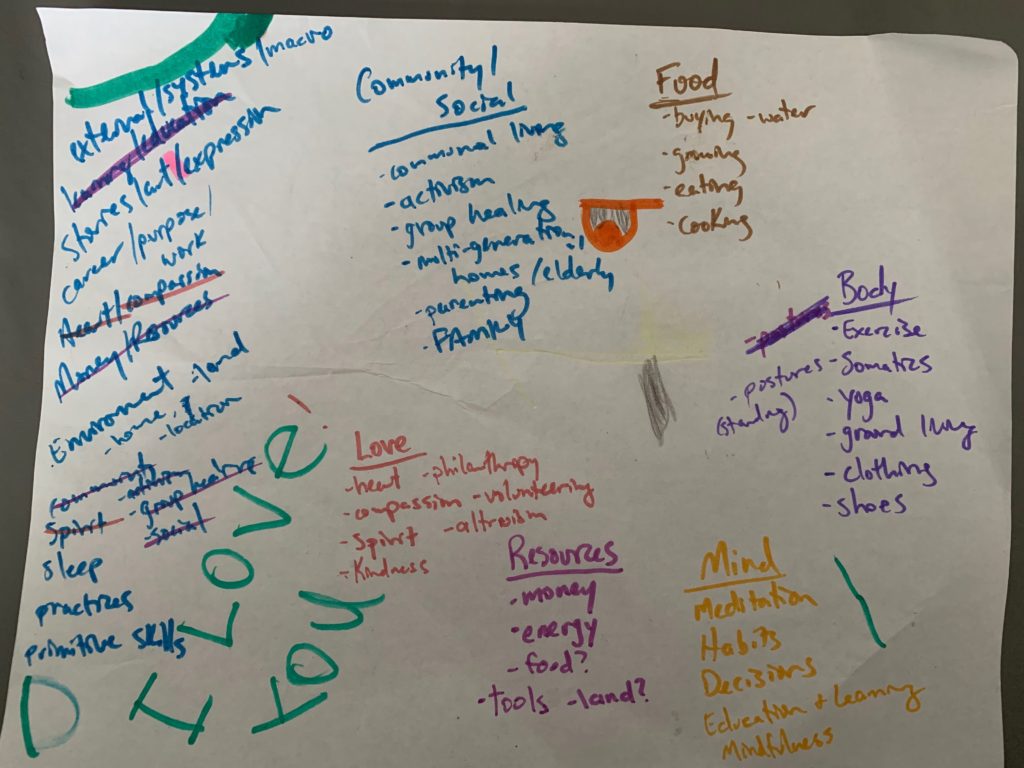
All good business ideas start with gently used scratch paper and children’s markers
A FRIENDSGIVING OF TRIFECTAS, FOUR-FECTAS, AND ALL THE -FECTA’S!
On Saturday of this week we had four friends over to our house; two married couples who are dear friends of ours. There were two standout memories of this gathering that I want to document. Both are related to music.
Earlier in the day, my partytime preparation included compiling a playlist of songs, custom-made for this group. I really enjoy having music as a part of social settings, and I love how the music can both set the mood and also be a reflection of the mood, depending on the flow of the environment. I made sure to add at least three or four songs that each of the six people in the group would really enjoy, would feel like the song was on the playlist “for them.” Of course, if one of my favorite songs happened to be Got To Give It Up by Marvin Gaye (which it is), it may very well also be a special song for one of my friends, and so we might both feel like this song was on the playlist “for us.”
As I pulled up this playlist to play over our basement speakers, I announced that I was putting on music, that anyone was free to suggest adding a song to the rotation at any time, and that I had personally curated this specific playlist with my guests in mind.
As the evening proceeded and new songs came up, we all enjoyed the game of guessing who the song must be for, which combination of us I must’ve had in mind when selecting the song for inclusion. If three of us felt like the song was “for us,” then it was a trifecta of song awesomeness! Four? A four-fecta of head-bobbing, hip-shaking sonic bliss! It was a fun way of stringing moments of connection together throughout the evening, and it’s a practice I’m going to continue for future get togethers.
The other immensely satisfying memory I have of this evening is when the men retreated to our guest room, which is now doubling as our “home recording studio” (emphasis on the quotation marks). I had one friend in there already, and I was playing him a song, really just the early seedling of a song, that I had created, over the studio speakers at a medium volume (so as to not disturb the vibe in the other room). As the third guy strolled into our room, as my music made its way through his ears to his brain, I grinned as his body hopped into the groove: toes tapping, hips swaying, head approvingly nodding. I asked him, “What do you think of this tune?” To which he replied, as he kept his gentle body groove going, “Yeah, it’s good. I can dig it.” Sensing that he might not know, I then commented, “I made this song.”
As much as it made me feel good that I had made a collection of sounds and rhythms that made a person move, it was an even lovelier experience to behold the fleeting expression on his face as he processed what I had just said. He hadn’t known I made it. The flash of surprise followed by approval on his face… it’s hard to express how gratifying that felt. I created an artistic thing that someone liked! They didn’t like it because I made it, because they know me and want to be supportive of me; they just flat out enjoyed it. And not just anyone, a close friend! This experience acts as fuel for my creative fire. I don’t sit in my basement and tinker around with making music for other people; all I do is make what sounds good to me. But that taste of validation from someone else, that they too can share in the joy of these sounds that I birthed into existence… man that is a juicy feeling for me. As scary as it can be to share stuff that I’ve created, this night makes me more inclined to share in the future. Thanks to you, friend.
FOOD OVER FOOTBALL
The next day I took my kids to the neighbor kid’s birthday party. Afterward, we went over to their house under the guise of “watching the Vikings game.” I haven’t been paying attention to the NFL or any professional sports this year (other than a little bit of AVP, of course); no fantasy teams, no gameday watching, and definitely no following of players, trades, injuries, and current events in the league. It has just seemed so unimportant to me. It’s an entertainment source that has lost its entertainment value. I remember past years where I’d be in three fantasy football leagues, and the hour of 11am-noon on Sunday wasn’t fun, it was stressful – checking all the last minute injury notices and waiver wire pickups. Meanwhile, I had a ton of leftover snack foods that didn’t get gobbled down the night before, so I loaded up our wagon with fixings for a fairly substantial spread to share. In the course of this neighborly Sunday afternoon get together, I realized that while Old Kevin would have been in his element watching football and tracking his fantasy team’s stats, New Kevin can’t really hold a conversation about the NFL anymore, but he can talk about food, recipes, and what cheese would perfectly pair with mango habanero jelly all day long!
(And when you think about it, which is really more important to you: watching large sweaty men give themselves concussions or discussing fun and delicious ways to fuel your body?)
CLOSING THOUGHT ABOUT THIS BLOG AND MY WRITING
I’m so close to being caught up to realtime with the weekly blogging about my sabbatical. It feels exhilarating to know that time is also here. I’ve been feeling buried under the weight of getting caught up. It’s starting to feel like I can actually write these weekly sabbatical posts the way I want to, the way I want to feel like I have the freedom to, not just by cataloging the events and documenting the actions, but also by giving myself the space and the permission to expand, to open up, and to share freely my thoughts, feelings, and reflections of the week’s transpirings. Plus, I’m holding on to this notion that once I’m caught up to realtime, I’ll be unburdened by the “catching up” and will have more time and energy to commit to other writing projects. I don’t know how much of a crutch that thought is right now, but I do know it’s been enough of a motivator to keep me going the last couple of weeks, so… if it ain’t broke…!
